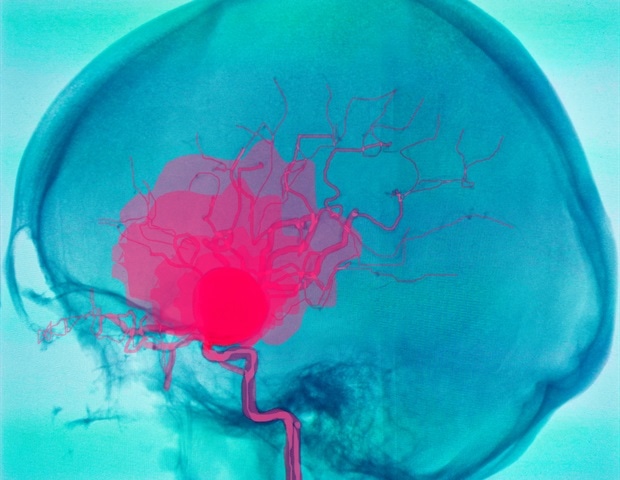Researchers in Japan have evaluated hemodynamic factors that may help identify sites where aneurysms are likely to form. Detailed findings of this study are described in the article “Computational fluid dynamic analysis of the initiation of cerebral aneurysms” by Soichiro Fujimura et al., published today in the Journal of Neurosurgery.
Unruptured aneurysms are most often found incidentally during screening for other diseases or health check-ups. Predicting locations where aneurysms are more likely to form can help with screening and prevention. Together with a group of engineers and physicians from multiple Japanese institutions, Dr. Soichiro Fujimura sought to find an association between hemodynamic factors and sites of aneurysm formation.
The researchers examined angiographic images from 10 cases in which new aneurysms were found during follow-up imaging after treatment for another pre-existing aneurysm elsewhere. Using earlier images obtained of vessel wall sites before the new aneurysms had formed, along with images of 34 aneurysm-free control sites in a separate set of patients, the researchers created 3D software models to evaluate the hemodynamic forces acting on the vessel walls.
Their results showed that the aneurysm formation sites were associated with regions of high tensile forces and large total pressure loss. The authors conclude that forces “caused by blood flow collision or the existence of secondary flow” at arterial bifurcations as well as arterial sidewalls are linked to aneurysm formation. The identification of these regions may lead to improved predictions of the locations where aneurysms may form.
Observation of the new aneurysm formation process is extremely rare and precise imaging analysis was challenging. This study may be useful as a screening method for the healthy person who has strong family history of brain aneurysms and for identifying places on cerebral arteries at risk for developing aneurysms in the future.”
Dr Yuichi Murayama, Study Author
Fujimura, S., et al. (2021) Computational fluid dynamic analysis of the initiation of cerebral aneurysms. Journal of Neurosurgery. doi.org/10.3171/2021.8.JNS211452.
